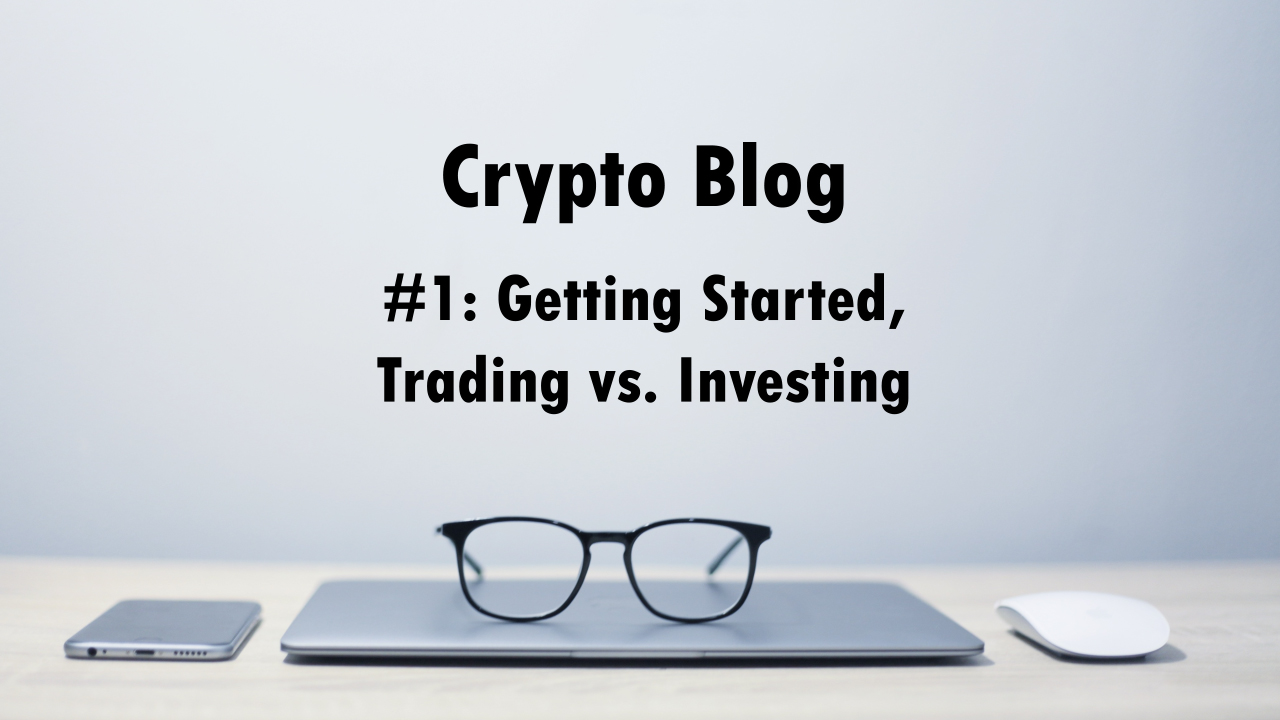Crypto Blog: 001 - Getting Started, Trading vs. Investing
So, I've decided to start a little blog here about my cryptocurrency journey. I started putting money into cryptocurrencies at the end of December, and it's really peaked my interest so much that I've been working on (and using) a trading strategy. A few months back I've been learning a lot about and practicing trading (and real trading) with CFDs and forex, and I'm looking to do something similar with crytocurrency.
Trading vs. Investing
This megatrend called blockchain technology has everyone going crazy, and it's still in its early stages. As an investor, I think blockchain technology is the future. But because it's still in early stages, trying to figure out who will dominate this space in the future is difficult to be honest. Everything seems promising these days. Every cryptocurrency and token is saying its the next best thing.
But like the dot-com bubble, who will actually still be around after the industry becomes more established? Bitcoin when from over 50% dominance in the crypto market down to about a third of the market in a matter of weeks. I think it's still too early to say who will fail and who will succeed.
And that's why, I'm going to be trading, buying and selling only on price action.
Staying away from Predictions
Predictions will always work part of the time. It's just probability. A lot of the time they're completely wrong as well, and at the very least, aren't very helpful at all. Some people like those kinds of things, but I very much doubt that anyone can consistently be successful with that approach.
And so, I'm staying clear of predictions.
Follow the Trend
I never used to like following the trend. A lot of the time I still don't like to follow the trend. I've got a very contrarian personality. That's a fact. And I've had to learn the hard way, and still learning, but when it comes to trading markets, it's a much better bet to be following the trend.
I like how Nicholas Darvas puts it regarding the stock market,
"There are no good or bad stocks, there are only rising and falling stocks."
Strategy Notes
Before I look at the details of the strategy, it's always good to have the right
perspective and frame of mind when implementing a strategy. So here are a few notes:
If it's falling, don't buy it. This has been one of the biggest lessons I've been learning when trading. In the stock market, investors often refer to what they call a "value trap". This is a stock or asset that looks undervalued but keeps trending downwards. There are hopes of a reversal but it never appears, and you're left just hoping still, while the downward trend continues. Think about the opportunity cost, where your money could be better allocated.
Momentum and volume is important. This is complementary of the first point. I want upward momentum, not downward momentum. "Buy low, sell high" sounds like good old advice, but the problem is that we're not that good at picking bottoms just like we're not that good at picking tops. Go figure. Also High volume with upward momentum confirms that there's healthy interest in the asset.
Relationships can get messy. If you're married to an idea, a token, or cryptocurrency, and something changes or happens, the story suddenly changes, you don't want to be clinging onto a sinking ship. I'm a fan of a few cryptocurrencies and tokens, but when it comes to trading it, it's better to take a rather detached kind of approach. Even if you are right about something, you may pay too high an opportunity cost waiting for the market to tell you that you're right.
- It is what it is. I know I've said this before but it really is so important. It doesn't matter how much you think the price of something should be. What it really is priced at is what it's priced at. Also, opportunity costs! (See above).
More Details to Follow
I don't want to make this post too long, so I'll share about my trading strategy in more detail in another post later. I'm keen to start this mini blog as it will keep me accountable to my strategy, as well as force me to assess my strategy and assess how I'm doing in the future.
